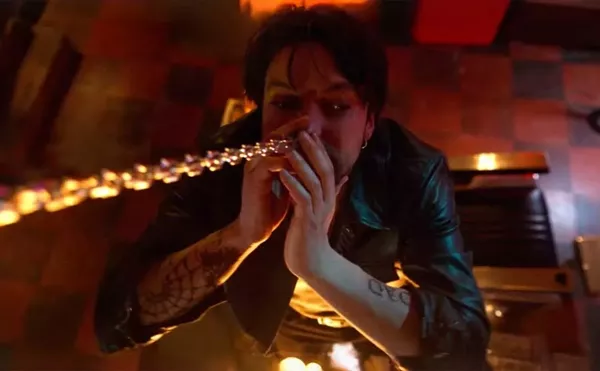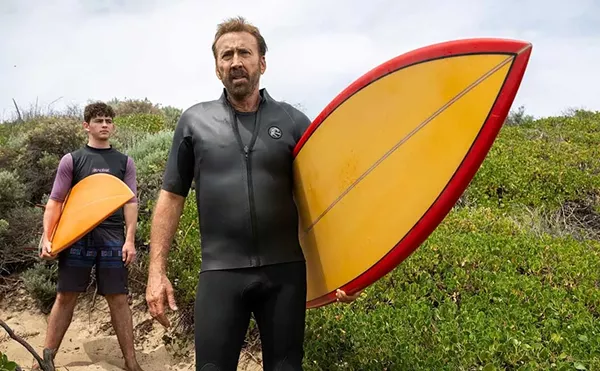
Audio By Carbonatix
[
{
"name": "GPT - Leaderboard - Inline - Content",
"component": "35519556",
"insertPoint": "5th",
"startingPoint": "3",
"requiredCountToDisplay": "3",
"maxInsertions": 100,
"adList": [
{
"adPreset": "LeaderboardInline"
}
]
}
]
The opening half hour of the latest "important" film from director Steven Spielberg (an Amistad as opposed to a Lost World) perfectly sums up the powerful brutality and cheap sentimentality that are, equally, Saving Private Ryan.
After solemn credits driven by mournful, military-style horns, Spielberg shows a translucent American flag waving in slow motion. He then cuts to an old man walking through the peaceful, tree-lined streets of Normandy on his way to a World War II memorial. His family walks 10 paces behind him, their expressions worshipful yet concerned.
The man is in tears, nearly convulsed with emotion as other people walk obliviously by him. After showing his terrified eyes, Spielberg brings the audience straight into the gut-wrenching scene of soldiers packed into Higgins boats and then storming Omaha Beach on D-Day. That sequence -- long, unflinching, gruesome, terrifying -- is one of the best representations ever put on film of the expression "cannon fodder."
Those scenes are Saving Private Ryan in a nutshell. The worn but sturdy flag signals a safe, patriotic film from a scion of liberal Hollywood. Quiet, plaintive music is part of Spielberg's wise, beautifully realized decision to punctuate his war epic with moments of near silence. These scenes provide real emotional intensity, unlike the weepy man who appears early on, trying to elicit tears that the film has not yet earned.
But when the soldiers led by Captain Miller (Tom Hanks) and Sergeant Horvath (Tom Sizemore) hit the beach, the film becomes something quite stunning indeed: a raw, visceral ballet of carnage -- a reminder for the smart-bomb 1990s of nitty, gritty combat and the real price of warfare. Inasmuch as Saving Private Ryan is about the rescue of one man -- Miller's post-D-Day squadron is assigned the task of locating a paratrooper (Matt Damon), the sole survivor of four brothers in service, so he can be sent home safely -- it's actually more about death than life.
Spielberg choreographs one stunning battle sequence after another (often choosing strong, subjective points of view), but ultimately it doesn't matter which, if any, of these soldiers survive. Robert Rodat's script makes them no more distinctive than a row of shooting gallery ducks. Only Hanks (our current cinematic embodiment of American decency), the stalwart, confident Sizemore and Barry Pepper -- who nearly steals the film as a Scripture-quoting sharpshooter and righteous angel of war -- seem remotely real as individuals.
In the middle of the final battle sequence, which rivals the D-Day scene in scale and intensity, Spielberg engineers a startlingly intimate death for the sole Jewish American soldier (Adam Goldberg). But considering the weapon used, and the role his killer played previously in the film, that amazing and shockingly frank portrayal of death is reduced to a cheap story device.
Like that scene, Saving Private Ryan is both glorious and contrived. Steven Spielberg has made a film about bravery that doesn't shy away from the horrors encountered by soldiers even in a "good" war. But he wasn't quite brave enough to present the story without a comforting coat of saccharine. Particularly by framing the film with scenes of the old man and the flag, Spielberg makes Saving Private Ryan the story of a war remembered instead of a war lived.
Serena Donadoni writes about film for Metro Times. E-mail her at letters@metrotimes.com.





